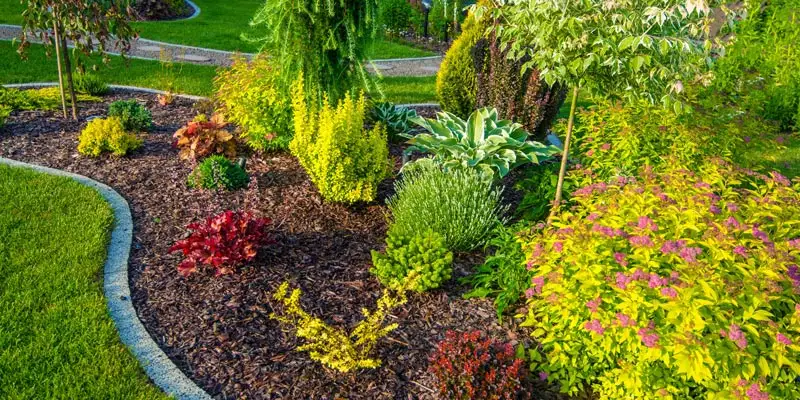Everything about Landscape Design
Everything about Landscape Design
Blog Article
Some Of Landscape Design
Table of ContentsSee This Report on Landscape DesignThe 7-Second Trick For Landscape DesignThe Greatest Guide To Landscape DesignThe Best Strategy To Use For Landscape Design
A yard can normally be divided into three areas: public (the front yard), exclusive (the back backyard), and solution (generally the side yard). The place of task areas depends largely on the kind of area, the size of space required, the kind of task, and the preferred distance to other activities and structures.
The outdoors wall of the home commonly functions as the very first wall or beginning point of an outdoor room. Incompatible usages must be separated, and related tasks, such as food preparation and eating, should be assembled to make the yard more effective and satisfying. When utilizing hardscape to develop areas, make use of construction product similar to that utilized in your home for continuity from the house right into the yard.
Linked areas. Credit Rating: Gail Hansen, UF/IFAS Making use of similar hardscape functions and duplicating plants draws the eye around the garden.
From a layout point of view, plant materials have 3 significant features in the landscape: aesthetic, structural and utilitarian. Visually, plants produce a visually enjoyable atmosphere and structurally plants organize and define areas.
The smart Trick of Landscape Design That Nobody is Talking About
For emotional comfort plants are used as physical or suggested barriers for personal privacy and security. Physical obstacles block both the sight and access to an area and include fencings, walls and plant bushes. Landscape Design. Implied barriers, generally low expanding plants, obstruct access but not the view (Number 9). Other functions of plants include cleansing the air, protecting against disintegration and soil loss, preserving moisture in the soil, and returning raw material to the dirt.
Physical and indicated obstacles. Credit: Gail Hansen, UF/IFAS For these reasons, the kinds of plants to be made use of (such as trees, bushes, or groundcovers) should be chosen in the beginning of preparation. Plant kinds are selected for their useful abilities so that their future objective and called for space can be thought about at the same time.
The overhanging aircraft, the upright airplane and the ground aircraft should all be thought about to create enclosure. As soon as the form of a plant bed has been developed, the plants ought to be massed (grouped) and layered to attain visual unity and the desired amount of room. The dimension of a plant mass will rely on the complete dimension of the yard, the dimension of the individual plants in the mass, and the focus or effect wanted from the plant product.
Each plant mass is in front of, behind, or alongside, one more mass. Figure 11. Horizontal plant layers. Credit Score: Gail Hansen, UF/IFAS Number 12. Vertical plant layers. Credit Score: Gail Hansen, UF/IFAS Duplicating plants within a mass browse around this site and duplicating masses with similar plants ties the yard together. The private plant qualities need to be thought about to efficiently layer and mass plants.
The 30-Second Trick For Landscape Design
All plant compositions start with the primary framework plants, the big, mainly evergreen history plants-such as the trees and big hedges. These plants separate or enframe spaces, control the size of the space, and offer the starting point for choosing the proper qualities of the 2nd layer, midground plants, for massing and infill.
Crucial points in the garden ought to be highlighted by the use distinct plants, distinctive frameworks, or garden ornaments. Marking thresholds or entryways to rooms can be done with gates, arbors, and actions, or through the use of special and vivid plants. The type and/or style motif of the yard will certainly frequently help figure out the crucial factors and just how they ought to be highlighted.
Other essential places in the yard are focal factors, which is made use of to aesthetically arrange a landscaped location. Various perspectives or perspectives can expose different make-ups in the landscape that may call for a range of focal factors.
The 8-Minute Rule for Landscape Design
Plant forms. Credit: Gail Hansen, UF/IFAS After form, appearance is the following leading feature of a plant; crude, tool and great textures can be used for contrast and focus in the landscape.


The positive fragrance of plants, the audio of wind in the trees, the sound and this website texture of water, and the colors and textures of sculptures, pots and garden furniture all contribute to the experience of the garden. One information that is commonly overlooked is the effect of light on the find out appearances of the plants.
The whole garden modifications in function and appearance throughout the day, and the training course of a year, as the light and temperature adjustment from early morning to night and period to period. Plant choice must take into consideration a plant's growth rate, its mature size and form, and the upkeep it will certainly require.
It is crucial to recognize the eventual fully grown dimension of plants so they can be positioned in the right place and spaced appropriately when they are set up. Providing plants space to expand is a challenge due to the fact that the usual fully grown size is commonly based on ideal growing conditions and the ecological conditions of a website may create a plant to expand larger or remain smaller.
Report this page